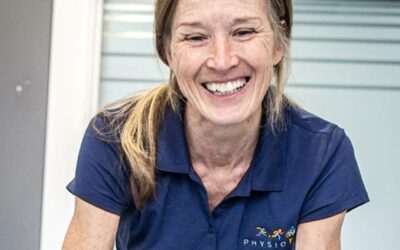Over the last 12 months, we have seen an increase in patients with problems that are almost certainly linked to the global situation that we find ourselves in. During the first lockdown, when there was the sudden rush to work from home, we saw an increase in patients with neck and thoracic pain. With the use of a laptop at the dining room table, people very quickly realised that looking down to a low screen was causing issues.
In the first lockdown, we spent a lot of time on Zoom calls addressing home ergonomics, suggesting small corrections or the use of supplementary equipment and software, such as plug-in keyboards. These allow a laptop screen to be appropriately raised while still being able to type. Alternatively, small desk stands that sit on a kitchen work surface allow for an improvised variable height set-up throughout the day.
During the second lockdown, the complaints we are seeing have somewhat changed. Most people that were having issues with their desk set-up have had the time to make amendments to make life more comfortable. The issue with this is that it allows them to now sit for longer periods of time. Our lives, in regard to physical activity, have become a little binary. We are either sat working – and when tired of working, go and relax on the couch – or we are exercising.
We have lost the walk to the train station, the pottering to the coffee shop or the water cooler at the other end of the office. The walk around the little pond on the business park has gone and the slow saunter to the meeting room or the boss’ office to ask for a bit of advice has been replaced by another Zoom call or email.
I don’t think people are sitting overall for an enormously longer period than before. However, the day is no longer broken up. Unless we live in Downton Abbey, the commute to work, the walk to the canteen or the distance to get a coffee is probably less than 10m. I think that this lack of “little and often” movement is the main reason we have seen an increase in low back and pelvic pain.
The biggest change we have seen that stands out during this second lockdown, however, is the number of children and teenagers complaining of the same issues that we see with the office worker. 7 hours in front of Zoom or Microsoft Teams is just not conducive to a happy, healthy teenager. Hopefully we can really learn some lessons about the importance of physical activity and exercise for young people as we move forward and out of this pandemic.
Our advice is to get up a little more often. Strategically place things you might need during the day at opposite ends of the house; ask Alexa to play your favourite song at least once a day and get up and dance; force yourself to “walk to lunch” via the post box at the end of the road.
Hopefully, with some small changes alongside your dose of daily activity, following these simple little bits of advice can help to reduce some of those aches and pains. Never forget – “motion is lotion”.



